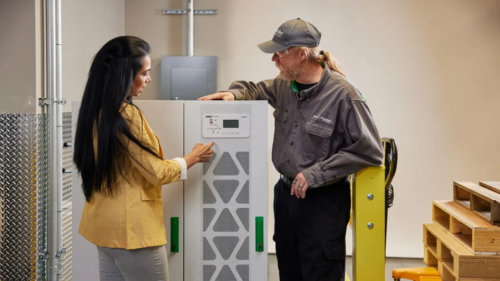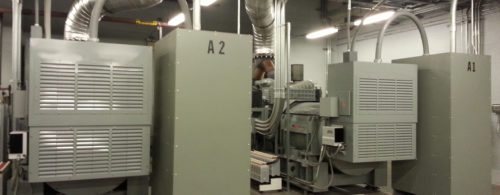Case study: Putting UPS systems to work
Many modern uninterruptible power supply (UPS) systems have an energy-saving operating mode. Data show that very few data centers put it to use because of the potential risks.
Philadelphia-based Jacobs was part of a team that recently finished construction of a 2.7-MW (IT load)—expandable to 5.4-MW—data center located in the Midwest. During commissioning, Jacobs was able to test its design by running the facility in the different modes of UPS operation to determine the effect on the overall efficiency of the facility.
The data center is fed by 415/240 V power from fully redundant UPS systems configured in a 2N arrangement. Each of the six UPS systems is a 1,100-kW, single-module, and scalable-type UPS that contains three 275-kW modules and can be expanded to four 275-kW modules. The UPS systems are arranged in “A” and “B” critical powertrains. A powertrain also consists of a step-down transformer and secondary switchgear.
The facility is served medium-voltage power via two utility services, each terminating on separate medium-voltage switchgear lineups. Backup power is provided to each medium-voltage switchgear lineup by a power plant with three diesel generators, expandable to six generators. Each section of medium-voltage switchgear serves multiple critical and mechanical powertrains.
Using suitcase-type load banks scattered throughout the data center, the facility was loaded to 1,300 kW, approximately 50% of the total capacity. This equates to about 217 kW per UPS system. The “A” side and “B” side UPS systems were placed in various modes of operation that included normal double-conversion, high-efficiency eco mode, and variable management module system (VMMS). In VMMS mode, the UPS unit regulates the number of modules required to meet the load (see Figure 4).
Load readings were taken and the PUE calculated for each mode of operation. The potential cost savings also was calculated based on a utility rate of 10 cents/kWh. The following table summarizes the PUE and potential savings results.
About the author
Kenneth Kutsmeda is the engineering manager for mission critical at Jacobs. For 20 years, he has been responsible for engineering, designing, and commissioning power distribution systems for mission critical facilities. He is a member of the Consulting-Specifying Engineer editorial advisory board.
Do you have experience and expertise with the topics mentioned in this content? You should consider contributing to our CFE Media editorial team and getting the recognition you and your company deserve. Click here to start this process.




